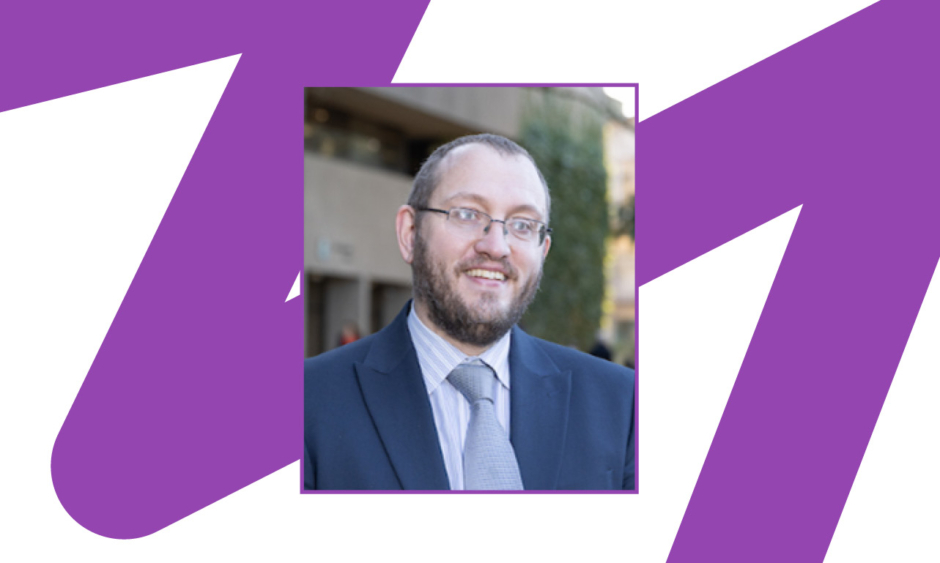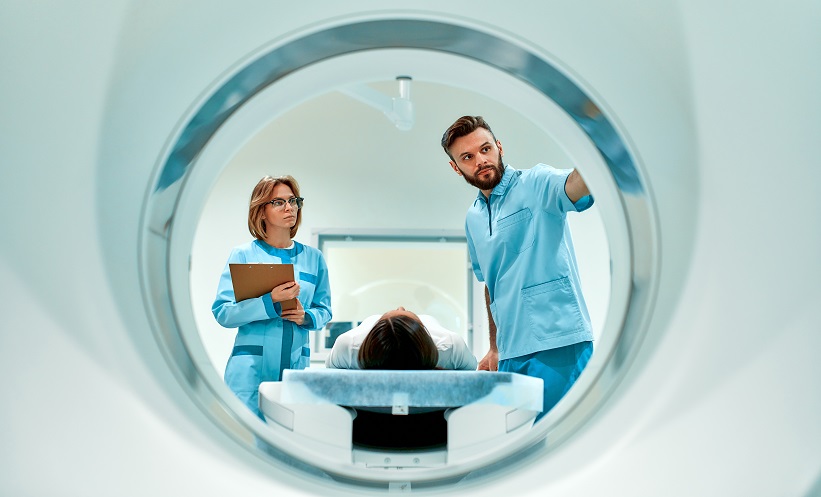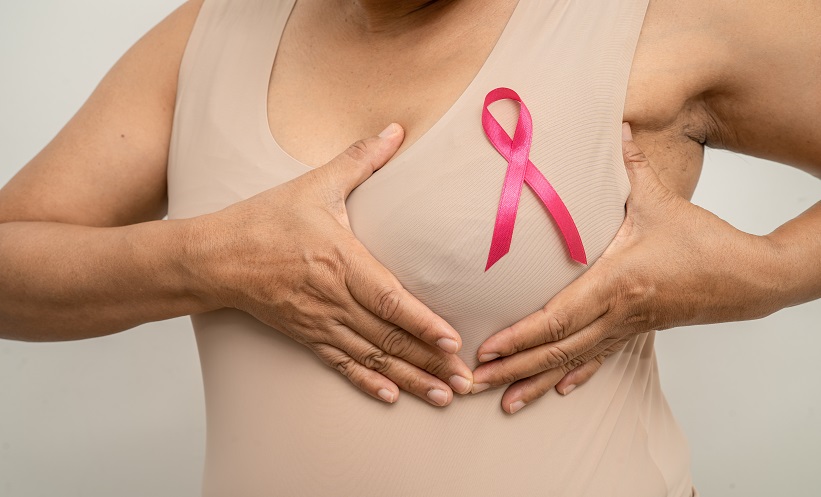Andrew England | Senior Lecturer in Medical Imaging & Radiation Therapy, University College Cork, Republic of Ireland; President of the European Federation of Radiographer Societies (EFRS)
Citation: EMJ Radiol. 2023;4[1]:51-53. DOI/10.33590/emjradiol/10300320. https://doi.org/10.33590/emjradiol/10300320.
![]()
What initially led you to pursue a career in radiography?
I think there were two reasons I chose radiography. I was always interested in technology when I grew up; anything that had a plug on it, or anything that was the latest technology, I was interested in and wanted to try out. But I also enjoyed the idea of caring for people, so radiography was a good opportunity to mix technology with patient care. I did a physics course at school, and they suggested you went to the local hospital to look at their X-ray department. That is when I found this career as a radiographer. I then applied, went to university, and since 1999 have been working in the field of radiography.
Do you think that there are any misconceptions about the speciality of radiography?
The first misconception is that radiographers just take the X-rays, but the role is much bigger than that. Radiographers perform CT and MRI scans, undertake fluoroscopy, nuclear medicine, ultrasound, and bone density examinations. We are pretty much involved in every aspect of medical care, from injuries to cancer imaging, and imaging from birth until, and beyond, death. Another misconception is the difference between radiology and radiography. The main difference is that radiology or radiologists are medically qualified doctors that have received specialist postgraduate medical training in interpreting radiology examinations, and providing a formal diagnosis. Radiographers traditionally did not do this. Radiographers were responsible for acquiring the images, and a medical doctor would then interpret and write a formal report. But now, more and more radiographers have been trained to do some of that report writing, although radiologists would lead on the more complex examinations. So, these are the two main misconceptions: the scope of the role, and the difference between a radiologist and a radiographer.
How does the European Federation of Radiographers Society (EFRS) use its position to educate practitioners about the field of radiography?
The EFRS represents over 120,000 radiographers across Europe, and in doing so, it represents over 40 national societies that represent radiographers in their home country. But it also works closely with over 60 educators, and it really has an enormous reach in terms of informing people on what is currently happening in radiography and what are best practices. It is a great forum for people to be inspired and think: “Why can’t we do what they’re doing in a particular country?” People look to the EFRS for that kind of vision and leadership. We have a number of opportunities where we seek to inform and develop our membership, including at the European Congress of Radiology (ECR).
What are the most exciting changes to the scientific programme for ECR 2023 compared to ECR 2022?
I think one of the main things is that we’re going to be more on-site and in person than we have been since the start of the pandemic. ECR 2022 was on-site, but some countries still had travel restrictions. Hopefully now we are going to see more and more people, more and more of our colleagues and friends, that we used to see at previous ECR congresses.
Something I am particularly excited about is that the radiographers’ content has grown, and we are very grateful to the European Society of Radiology (ESR), and Adrian Brady, for the support they have given. The radiographers’ programme is largely going to be delivered in one area of the conference centre, where there will be a radiographers’ lounge and a lecture theatre. There will also be a research hub, which is almost like a science room, where people can go and get involved in some of the latest experiments around radiography. If you want to find out what research is being done, not only can you go in that room and see it, but you can actually be part of it. So, we are really excited about that. This concept is not new, but it has grown considerably. In fact, a lot of the changes are more about growth; we know the things that work well, and we’ve expanded on them.
You are a member of the Postgraduate Education Programme Subcommittee, and a Section Coordinator of the Open Forum Programme. Could you please explain what these positions entail, and how they contribute to the success of ESR?
These positions are really about representing the entire radiography community of Europe and beyond, and suggesting ideas for topics and methods of delivery. Within the Postgraduate Education Subcommittee, it is all about putting ideas forward and trying to provide the voice for radiographers, but also listening to colleagues across different specialties about how areas or content can be improved, and giving them feedback. The meeting is truly multidisciplinary, as there are radiologists, medical physicists, and radiographers on the committee. As a committee, we listen to each other and we share ideas, whether that’s for speakers, topics, overall sessions, or titles.
Although some sessions at ECR are branded as radiographers’ sessions, they are open to everybody, and often we will see people dipping in and out from the different specialities. The Open Forum at ECR 2023 is designed for people to be able to drop in and out, allowing radiographers to see the latest research in a very open and positive environment. ECR is an excellent congress for those who may not want to be at a session from the beginning to the end, but prefer to drop in and see two or three talks and then move on to the next. The ECR 2023 App allows you to plan your agenda for the week, and move between meetings and sessions.
As an educator, where can we expect to see your focus lie in the coming years?
I recently gave a talk at the Arab Health Total Radiology conference about the future of radiography, and I think there are a few key areas where we are going to see greater focus: education, and how we embrace technologies, particularly those which are computer-based. We need to learn how to embrace the benefits of computers, artificial intelligence, and machine learning for our patients. We are often scared that technology will make us less efficient, or will not clearly help improve patient outcomes. But if we use these technologies correctly, then we have got a good opportunity to improve patient care, and to improve the efficiency of our practice. So, it is about focusing on embracing new technologies positively.
What are the most significant changes you have seen in the speciality of radiography during your time working in the field?
I would say there are two areas to focus on here. The first one is digitisation, or the computer revolution. When I started as a radiographer, 20 years ago, all images were hard copy X-ray films. Over the past 20 years, we have seen enormous changes in how we acquire and view radiology images. Everything is now paperless and digital. Images are reviewed on computers or tablets, and they can be reviewed throughout the hospital, or remotely. This technology has allowed for more conditions to be diagnosed, and for newer treatments to evolve. I would really say the digitisation would be the main one from the technology side.
The second one would be how our role as a radiographer has changed. While radiographers still acquire X-rays, images, scans, and so on, we are now also starting to write formal radiology reports, perform some of the advanced examinations, and maybe even perform some small treatments, such as taking a biopsy or inserting a catheter into the central venous system for feeding, or to provide medication. The role of radiographers is growing, and the range of career options is now much vaster.
Are there any innovations on the horizon of the field of radiography that you think are particularly noteworthy?
Again, there are two areas of change. Technology is continuing to grow, and it is going to allow us to take medical images with lower doses of radiation. This has always been a big restriction. While radiology is very powerful in terms of helping in medicine, you have to use it carefully. However, the radiation doses are decreasing, and we are going to get to a point where scans that are currently kept for very selective indications or very serious conditions will have doses similar to standard X-rays. So, we might actually see that we’re doing much more cross-sectional imaging (CT) and maybe less conventional radiography (X-rays) in the future. Similarly, one of the limitations with MRI scanning is time; typically it can take around 30 minutes to acquire a single scan. This means that you are limited in terms of how many scans you could offer in a day, and also makes it only accessible to certain patient types. Now, there is evidence that we can offer scans that are in the region of 1 or 2 minutes. This will mean that the amount of scans that can be offered will be greater, and that different patients will be able to access them. We are probably going to see some changes in what we would normally call first-line imaging. While that area commonly focuses on X-ray imaging, you might start with more CT or MRI examinations. The other area is advanced practice. The role of radiographers and radiologists is going to continue to change over the next 10–20 years, especially with the more widespread availability of artificial intelligence.








